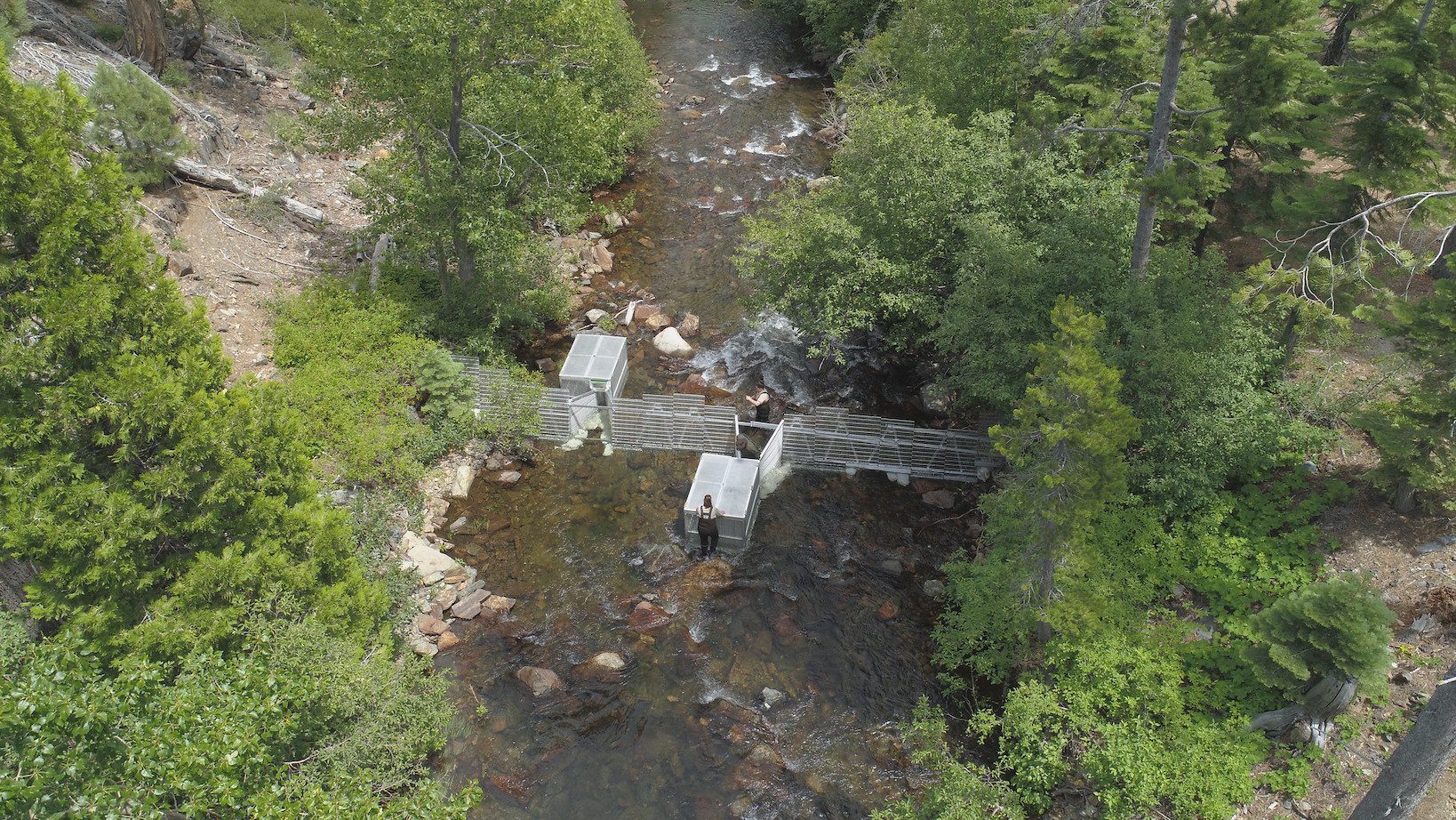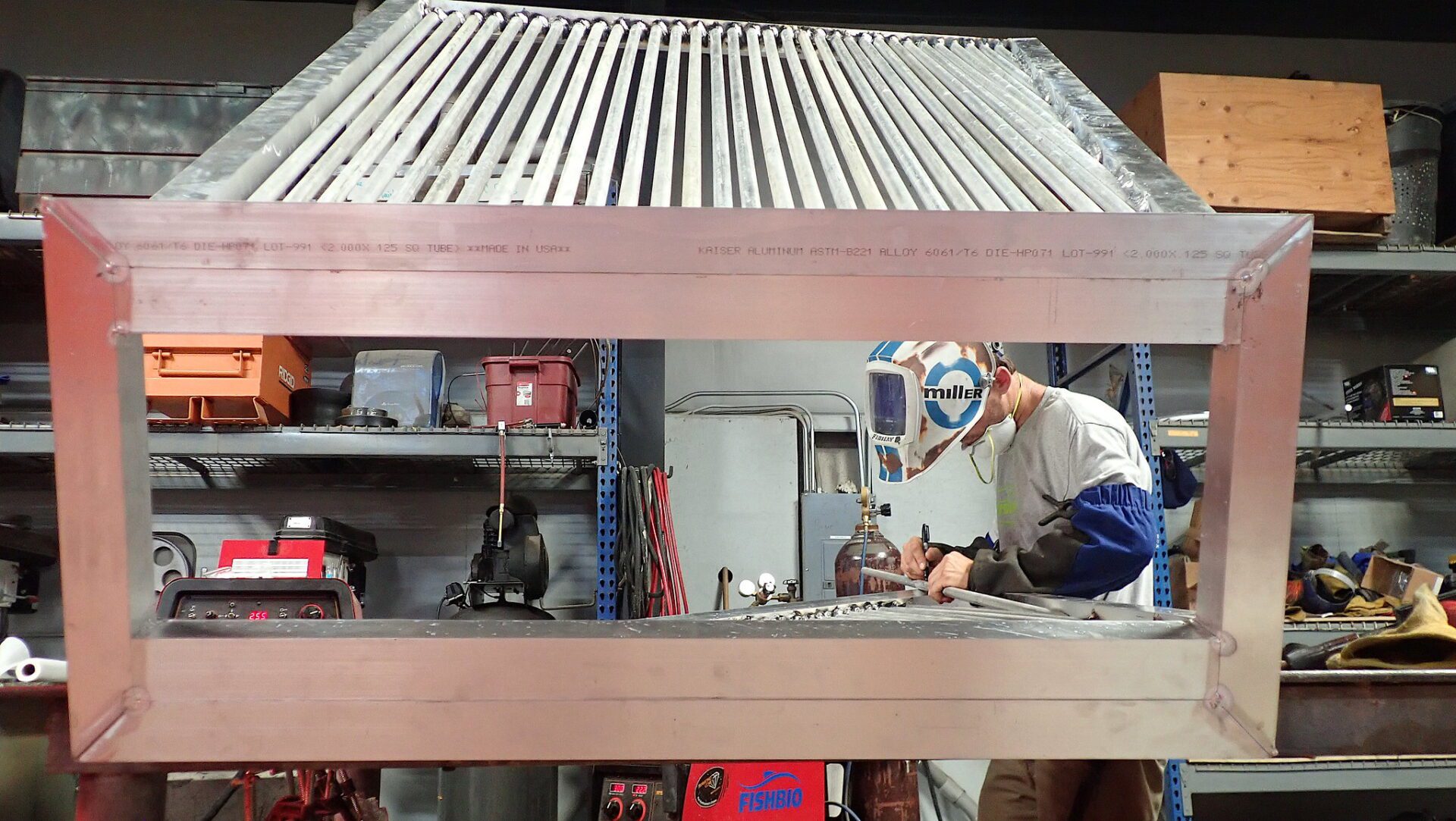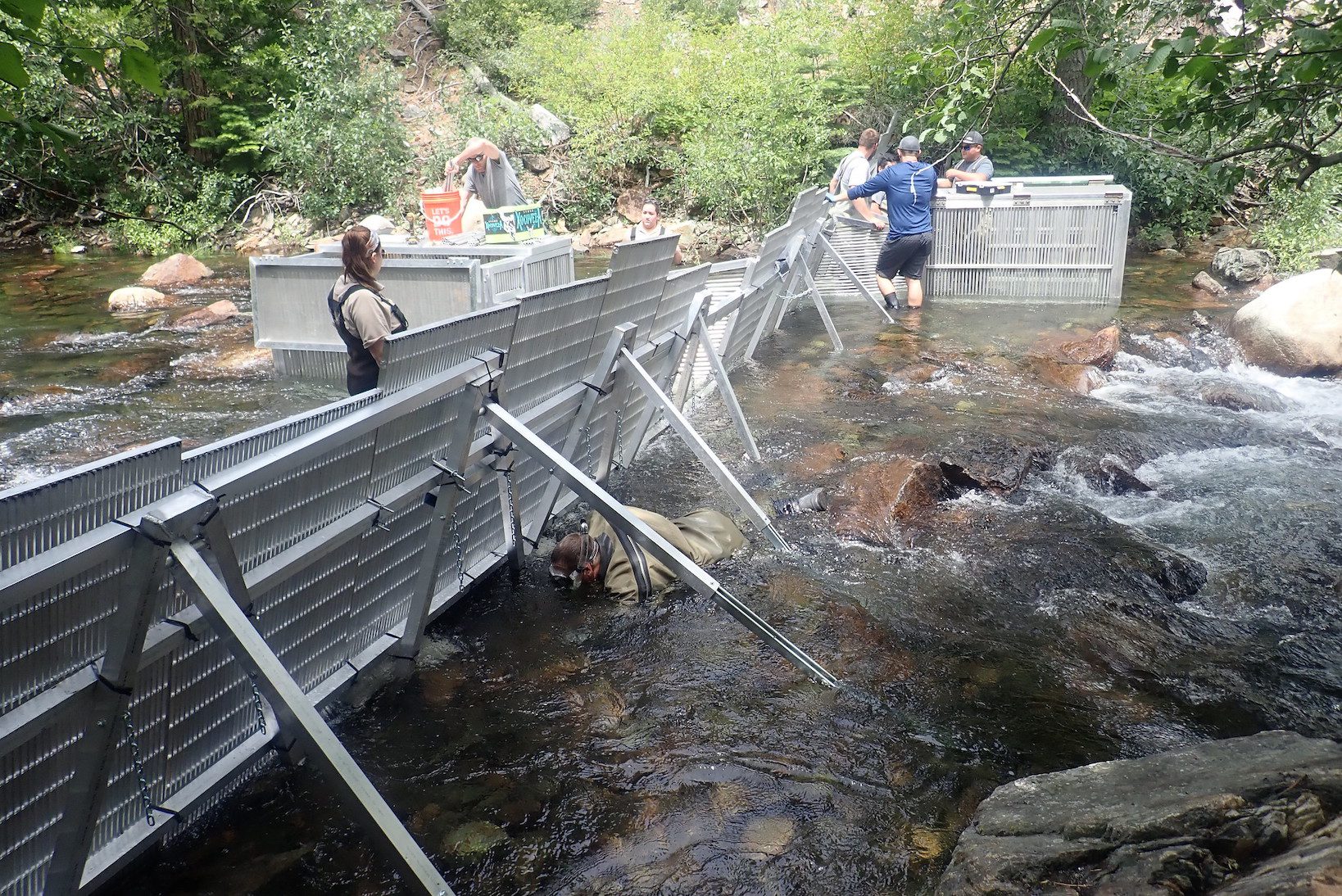Wednesday September 11, 2019
 Sparks have been flying in the Fablab at our FISHBIO office in Oakdale. Our fabricators recently constructed two custom weirs that were commissioned by the U.S. Fish & Wildlife Service’s Lahontan National Fish Hatchery Complex (LNFHC) in Garnerville, Nevada. The weirs are part of reintroduction program to restore populations of Lahontan cutthroat trout in the Truckee River watershed on Glen Alpine Creek, a tributary of Fallen Leaf Lake in El Dorado County, CA.
Sparks have been flying in the Fablab at our FISHBIO office in Oakdale. Our fabricators recently constructed two custom weirs that were commissioned by the U.S. Fish & Wildlife Service’s Lahontan National Fish Hatchery Complex (LNFHC) in Garnerville, Nevada. The weirs are part of reintroduction program to restore populations of Lahontan cutthroat trout in the Truckee River watershed on Glen Alpine Creek, a tributary of Fallen Leaf Lake in El Dorado County, CA.
Lahontan cutthroat trout (Oncorhynchus clarkii henshawi) were reintroduced to Fallen Leaf Lake in 2002 by the LNFHC in an attempt to reestablish a self-sustaining population of this species in the Lake Tahoe Basin. However, nonnative rainbow trout (Oncorhynchus mykiss) and lake trout (Salvelinus namaycush) also live in Fallen Leaf Lake and can hinder restoration of Lahontan cutthroat trout by interbreeding with them and competing for food or spawning areas. Lake-dwelling rainbow and Lahontan cutthroat trout are potamodromous, meaning they spawn and are born in upriver tributaries, but migrate downstream to larger bodies of water as juveniles and spend most of their lives there. The weirs will be installed upstream of Fallen Leaf Lake to monitor Lahontan cutthroat trout populations spawning in Glen Alpine Creek.
The weirs on Glen Alpine creek will be installed during the trout spawning and juvenile outmigration season (March to July) and will help LNFHC biologists monitor and manage the species’ reproduction and populations. The weir allows juvenile Lahontan cutthroat trout to be captured for genetic testing, but allows other native smaller species to pass through unhindered. The portable rigid weirs also feature both upstream and downstream fish traps that allow the USFWS to sort out nonnative trout from native ones to prevent the rainbow trout from hybridizing with Lahontan cutthroat trout.
Another feature of Glen Alpine Creek that required the use of a custom weir design is its tendency to experience “flashy” high flows. These types of flows had previously wiped out two weirs installed by the LNFHC on Glen Alpine Creek, so FISHBIO was enlisted to help solve this problem. Our solution was to design portable rigid weirs with collapsible aluminum A-frames and removable picket panels that could withstand high flows, be laid flat in high debris events, or be removed completely within a couple of hours. The entire weir fits together like an erector set made of live boxes, picket panels, and A-frame supports with pieces that can be easily moved by a few people and mixed-and-matched to fit in a different site on the stream.
FISHBIO has assisted in studies of Lahontan cutthroat trout in the past, working with the Summit Lake Paiute Tribe to install monitoring equipment on Mahogany Creek in Nevada. The Lahontan cutthroat trout is a special fish to the tribe and has an eventful history. Thanks to the hard work of all the people in involved in their restoration, the Lahontan cutthroat trout’s future looks like it’s moving towards a fisheries conservation success story.


